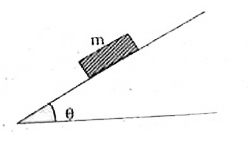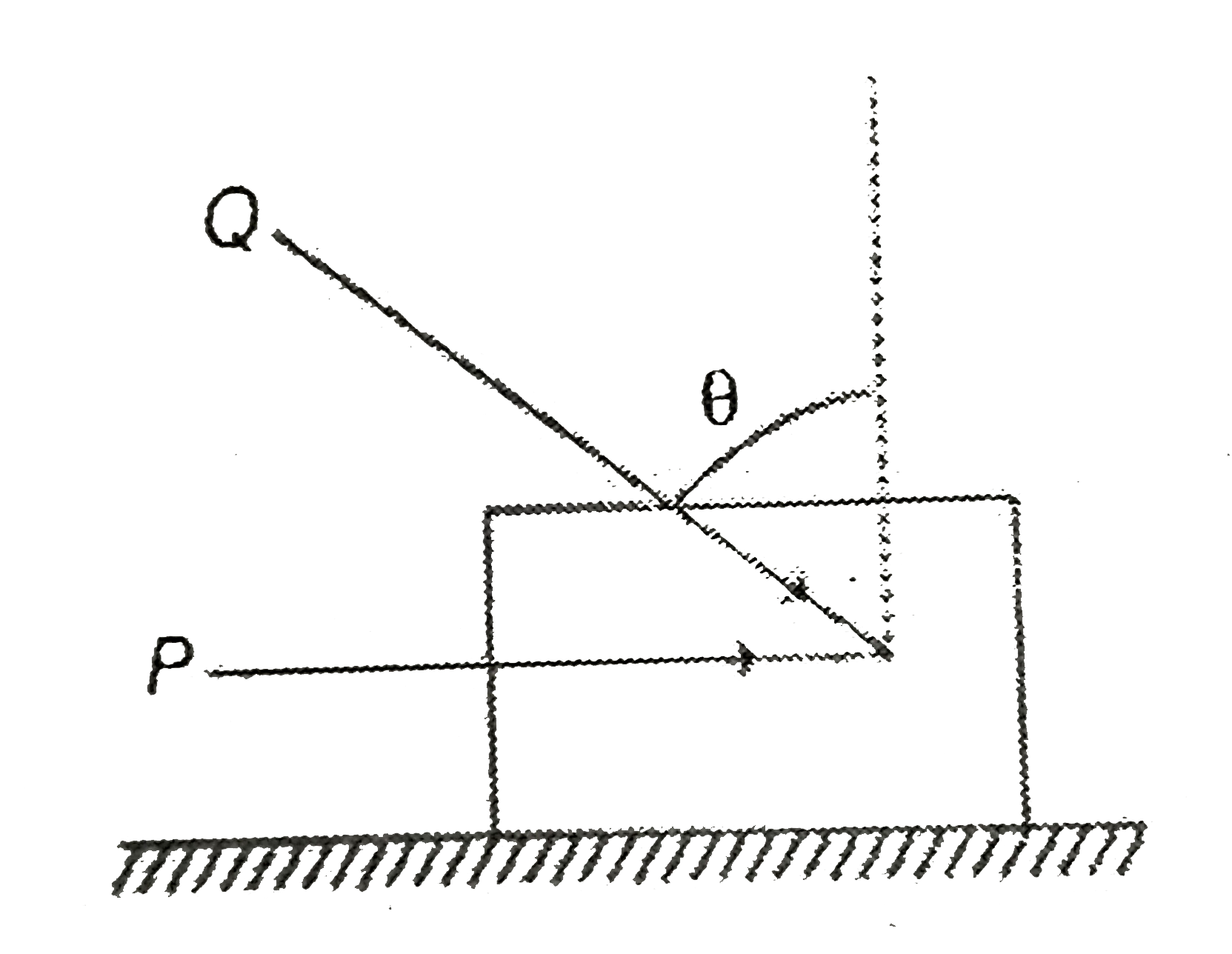A cyclist speeding at in a circle of 18 m radius makes an angle with the vertical. Calculate . Also determine the minimum possible value of the coefficient of friction between the tyres and the ground?
To solve the problem step by step, we will follow the physics principles related to circular motion and the banking of roads.
Step 1: Understand the problem
We have a cyclist moving in a circular path with a speed of v=6m/s and a radius of r=18m. We need to find the angle θ that the cyclist makes with the vertical and the minimum coefficient of friction μ required for this motion.
Step 2: Use the formula for banking angle
For a banked curve, the relationship between the banking angle θ, speed v, radius r, and acceleration due to gravity g is given by:
tan(θ)=v2rg
where g is the acceleration due to gravity, which we will take as 9.8m/s2.
Step 3: Substitute the known values
Substituting the known values into the formula:
tan(θ)=(6m/s)2(18m)(9.8m/s2)
Calculating v2:
v2=62=36m2/s2
Calculating rg:
rg=18×9.8=176.4m2/s2
Now substituting these values:
tan(θ)=36176.4≈0.2041
Step 4: Calculate the angle θ
To find θ, we take the arctangent:
θ=tan−1(0.2041)
Using a calculator:
θ≈11∘32′
Step 5: Find the minimum coefficient of friction
The minimum coefficient of friction μ can be expressed as:
μ=tan(θ)
From our previous calculation, we already found that:
tan(θ)≈0.2041
Thus, the minimum possible value of the coefficient of friction is:
μ≈0.2041
Final Answers
- The angle θ is approximately 11∘32′.
- The minimum coefficient of friction μ is approximately 0.2041.
We have a cyclist moving in a circular path with a speed of v=6m/s and a radius of r=18m. We need to find the angle θ that the cyclist makes with the vertical and the minimum coefficient of friction μ required for this motion.
For a banked curve, the relationship between the banking angle θ, speed v, radius r, and acceleration due to gravity g is given by:
tan(θ)=v2rg
where g is the acceleration due to gravity, which we will take as 9.8m/s2.
Substituting the known values into the formula:
tan(θ)=(6m/s)2(18m)(9.8m/s2)
Calculating v2:
v2=62=36m2/s2
Calculating rg:
rg=18×9.8=176.4m2/s2
Now substituting these values:
tan(θ)=36176.4≈0.2041
To find θ, we take the arctangent:
θ=tan−1(0.2041)
Using a calculator:
θ≈11∘32′
The minimum coefficient of friction μ can be expressed as:
μ=tan(θ)
From our previous calculation, we already found that:
tan(θ)≈0.2041
Thus, the minimum possible value of the coefficient of friction is:
μ≈0.2041
- The angle θ is approximately 11∘32′.
- The minimum coefficient of friction μ is approximately 0.2041.
Topper's Solved these Questions
- BOOK - DC PANDEY ENGLISHCHAPTER - CIRCULAR MOTIONEXERCISE - Solved Examples2videos
CIRCULAR MOTION
- BOOK - DC PANDEY ENGLISHCHAPTER - CIRCULAR MOTIONEXERCISE - Miscellaneous Examples5videos
CIRCULAR MOTION
- BOOK - DC PANDEY ENGLISHCHAPTER - CENTRE OF MASS, LINEAR MOMENTUM AND COLLISIONEXERCISE - Level 2 Subjective21videos
CENTRE OF MASS, LINEAR MOMENTUM AND COLLISION
- BOOK - DC PANDEY ENGLISHCHAPTER - COMMUNICATION SYSTEMEXERCISE - Only One Option is Correct27videos
COMMUNICATION SYSTEM
Similar Questions
A solid cylinder is rolling down on an inclined plane of angle θ. The minimum value of the coefficient of friction between the plane and the cylinder to allow pure rolling
View SolutionIn the given system, a block of mass m is resting on a board which makes an angle θ with the horizontal. What should be the minimum value of θ, so that the block just starts moving downwards? The coefficient of friction between the surfaces of the board and the block is μ.
 View Solution
View SolutionWhat is the minimum stopping distance for a vehicle of mass m moving with speed v along a level road. If the coefficient of friction between the tyres and the road is μ.
View SolutionWhat will be the maximum speed of a car on a road turn of radius 30 m, if the coefficient of friction between the tyres and the road is 0.4? (Take g=9.8m/s2)
View SolutionWhat is the maximum speed with which a cyclist can move without skidding, in a circular path of radius 10 m, on a road where the coefficient of friction between the tyre and the road is 0.5 ?
View SolutionFind the maximum speed at which a car can take turn round a curve of 30 cm radius on a level road if the coefficient of friction between the tyres and the road is 0.4. Take g=10ms−2.
View SolutionWhat will be maximum speed of a car on a curved road of radius 30 m , If the coefficient of friction between the tyres and the road is 0.4?
(g=9.8m/s2)View SolutionA car round on unbanked curve of radius 92 m without skidding at a speed of 26ms−1 . The smallest possible coefficient of static friction between the tyres and the road is
View SolutionA cyclist speeding at 18km/h on a level road takes a sharp circular turn of radius 3 m without reducing the speed . The coefficient of static friction between the tyres and the road is 0.1 Will the cyclist slip while taking the turn ?
View SolutionA block of mass m lying on a rough horizontal plane is acted upon by a horizontal force P and another force Q inclined at an angle θ to the vertical. The minimum value of coefficient of friction of friction between the block and the surface for which the block will remain in equilibrium is
 View Solution
View Solution

